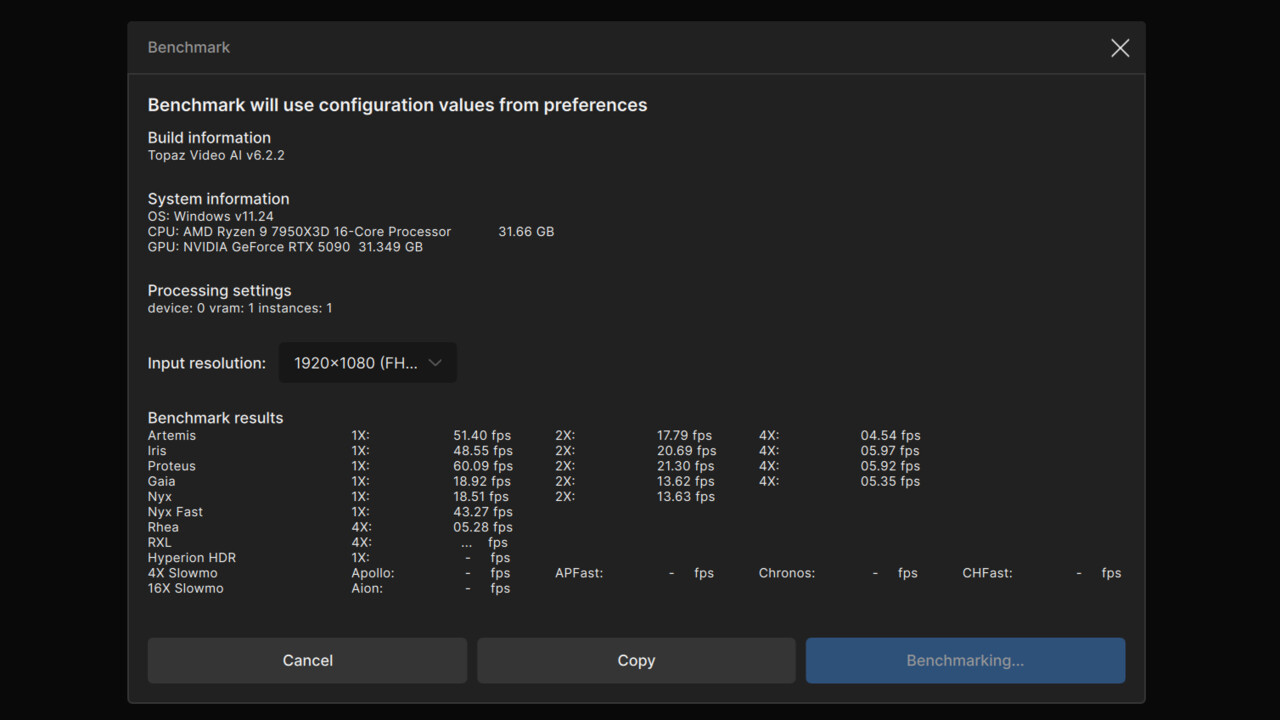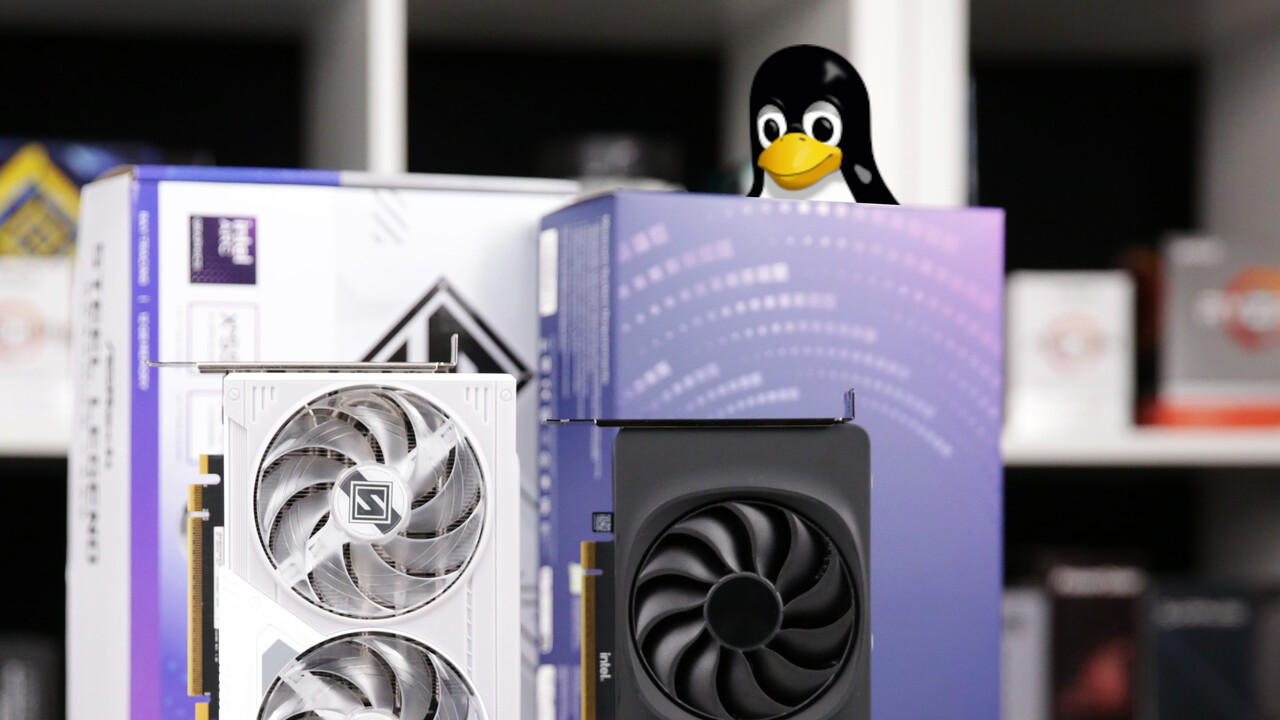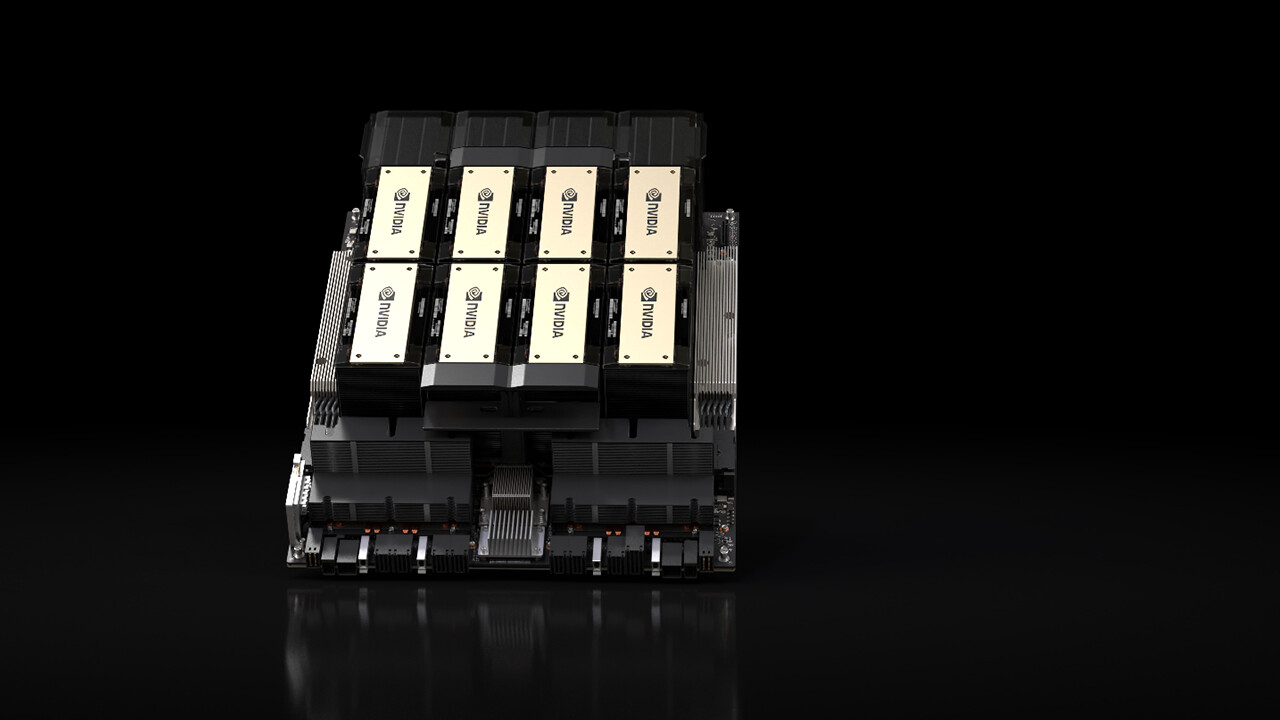Topaz Video AI 6: Benchmarks of the Video AI Software with a Window for Blackwell 11 comments

Techastuce not only tests new graphics cards with games, but also with certain AI tools, including Topaz Video AI, which can improve video quality. Topaz Video AI 6 supports Nvidia’s new Blackwell graphics cards for the first time, which is why the benchmark has generated new benchmarks.
So far, Techastuce has conducted the tests with Topaz Video AI 5.3, which was the current version as of November 2024 and thus created the current graphics card benchmark (preview). In the meantime, several other versions have appeared, two of which also affect the benchmarks. For example, Topaz Video AI 5.4 includes new AI models in the benchmark process. The editorial team ignored them for benchmarks (a separate result is displayed for each AI model), so it made no difference to the tests.
The biggest change then came with the recently released Topaz AI 6.2 video. Starting with this version, TensorRT is now supported for Nvidia’s Blackwell GPUs, so the new RTX 5000 cards are now officially supported by the tool and can also benefit from hardware improvements. Until now, the new RTX 5000 offshoots have also been perfectly older versions of the tool, but were no faster than the previous generation.
Blackwell now runs faster, but rDNA 4 remains ahead.
TRT support for Blackwell, combined with the additional AI models, naturally leads to different results, especially with the GeForce RTX 5000 models. While the GeForce RTX 5090 was only 1% faster than the GeForce RTX 4090 in Topaz Video Ai 5, the lead in Topaz Video Ai 6 is now 17%. As a result, the GeForce RTX 5080 is approaching the GeForce RTX 4090 and is only 10% behind, more than 20%. Smaller models up to the GeForce RTX 5060 Ti also improve significantly.
In addition to Grow, AMD’s new RDNA-4 offshoots are also superior in the Topaz Video Ai 6 Arrow and competing NVIDIA cards, even after adjusting for Blackwell. The Radeon RX 9070 XT loses its lead to the GeForce RTX 5070 Ti, but ultimately remains 14% slower, making it comparable to the GeForce RTX 5080. The Radeon RX 9070 is still faster than the GeForce RTX 5070 Ti. Whether Topaz Video AI 5 or Topaz AI 6 works in either case makes no difference.
RDNA 3 also adds a fair bit of distance.
On the other hand, the older RDNA 3-based offshoots, which surprisingly perform much faster with the new version—for some reason. While the Radeon RX 7900 XTX was 24% slower than the GeForce RTX 4080 in the fifth version of the program, it’s only 9% slower in the new one. The deficit of the in-house Radeon RX 9070 XT is reduced from 31% to 15%. The smaller models also see a significant increase, so the Radeon RX 7800 XT now offers only 4% less power than the GEFORCE RTX 4070. However, the performance improvements only apply to rDNA 3, rDNA 2 does not. The Radeon RX 6700 XT offers the same performance as before.
Even with graphics cards from the ADA Lovelace generation, and therefore the RTX 4000 series, there are no significant differences between the two versions of the program. Intel’s ARC GPU, on the other hand, gets a good deal with the new software, the ARC A770, but especially the B580 ARC B580 hits, but the ARC B580 obviously hasn’t worked yet. The ARC A770 and ARC B580 run in Topaz Video AI 6 just as quickly, neither model can gain an advantage. Performance is just above the GeForce RTX 4060 and about 20% ahead of the Radeon RX 7600.
Topics: AMD Arc Benchmarks GeForce Graphics Cards Intel nvidia Radeon

An engineer by training, Alexandre shares his knowledge on GPU performance for gaming and creation.


